Category: Back to the Planet
Project title: Green Oasis Sustainable Development Project
Project type: Business Implementation or Operational Initiative
Relevant SDG(s):
- Goal 2: Zero Hunger
- Goal 6: Clean Water and Sanitation
- Coal 12: Responsible Consumption and Production
- Goal 13: Climate Action
- Goal 15: Life on Land
Primary topic(s):
- Industrial Innovation and Automation
- Digital Solutions for Sustainability
- Net Zero Strategies and Scope 3 Emissions
- Nature-positive Solutions and Regenerative Agriculture
- Water Stewardship and Management
- Climate Resilience and Adaptation
- Workforce Well-being and Fair Practices
- Energy Efficiency and Renewable Energy Integration
Relevant products(s): macadamias, pecans, walnuts, and dates.
Project end date: July 2028. Duration: 7 years
Location: China
Is this a multi-collaborative project? /
ABSTRACT:
Since its establishment, QiaQia has consistently embedded ESG concerns across the entire operational chain, from cultivation and procurement to production, transportation, and sales. We are committed to promoting the harmonious coexistence of economic, social, and environmental benefits, contributing to global sustainable development. We launched the Green Oasis Sustainable Development Project, aiming to implement green concepts throughout the product life cycle. By controlling energy consumption at the source, conserving resources, and reducing pollutant and greenhouse gas emissions, we are dedicated to building a more sustainable future. This application highlights three key sub-projects under this project:
Project 1: Sustainable Cultivation of Pecans and Macadamia Nuts
The traditional nut cultivation industry faces numerous ecological challenges, including water and fertilizer requirements, and waste management. If not carefully managed, these factors can impact soil and water, biodiversity. Moreover, emissions from fertilizers and agricultural machinery can play a role in contributing to climate change.
QiaQia operates five plantations in China, including four pecan plantations in Hefei, Anhui Province, and one macadamia nut plantation in Baise, Guangxi Province, with a total cultivation area of over 4,900 acres, including collaborations with local farmers. Recognizing the issues in traditional nut cultivation, we began exploring environmentally responsible planting practices to promote sustainable transformation across the industry.
To reduce water consumption in cultivation, we established an integrated irrigation system combining drip and micro-sprinkler irrigation. Additionally, we developed an intelligent monitoring system utilizing soil moisture sensors, meteorological station data, and deep learning algorithms to monitor real-time soil moisture and weather changes. This system dynamically adjusts irrigation frequency and volume based on the water requirements of plants at different growth stages. Furthermore, we built reservoirs and drainage channels to collect rainwater and surplus irrigation water, facilitating water recycling and minimizing waste.
To limit chemical fertilizers and address waste disposal issues, a waste utilization mechanism was set up. Planting waste, including branches, straw, and nut shells, was processed through microbial fermentation to produce organic fertilizers, effectively substituting chemical fertilizers. Besides, we grew crops such as soybeans and alfalfa under the nut trees to naturally increase soil nitrogen content, further enriching soil fertility and enhancing biodiversity.
Project 2: Desert Cultivation
According to the United Nations Convention to Combat Desertification (UNCCD), 3.2 billion people worldwide are negatively impacted by desertification, and 10% of GDP is lost due to desertification per year. Desertification leads to declining soil quality, degraded agricultural environments, and reduced crop yields, posing serious threats to food security. Moreover, desertification exacerbates water scarcity in arid regions, triggering water crises and threatening the survival of humans, animals, and plants.
Since 2021, QiaQia has collaborated with domestic research institutions on desert socialization projects, cultivating sunflowers, walnuts, and red dates on rehabilitated desert land to combat global desertification. We used a biodegradable, plant-based eco-friendly sand-binding material to amend the top 20–30 centimeters of desert soil, imparting mechanical properties similar to natural soil and providing self-repairing and self-regulating eco-mechanical attributes. Soilized desert also gains the ability to retain water, nutrients, and air, and stimulates the proliferation of beneficial microorganisms, offering an excellent medium for plant growth.
During desert cultivation, we employed biodegradable mulch films to minimize water evaporation and a precision irrigation system combining pivot and drip irrigation. Drip irrigation was used to save water in regular time, while pivot irrigation was applied during extreme heat to protect the plants. In addition, we rotated sunflowers with alfalfa, wheat, and sorghum to enhance soil fertility and increase organic matter content in the soilized desert. Crop coverage in the desert suppressed desertification and created habitats for insects, birds, and animals, significantly enriching local biodiversity and enabling ecological development.
Project 3: Renewable Energy
According to the Food and Agriculture Organization of the United Nations (FAO), in 2022, agrifood system emissions were 16.2 billion tons of CO2 equivalents, accounting for 29.7 percent of global anthropogenic emissions (53.5 billion tons of CO2 equivalents). Global warming is altering climate patterns, increasing the frequency and intensity of extreme weather events, and causing severe damage to ecosystems, the economy, and human health. Therefore, it is critical to promote renewable energy, such as solar and wind power, thereby reducing dependence on coal, oil, and natural gas.
To align with the Sustainable Development Goals (SDGs), we incorporated clean energy into the core of our ESG strategy in 2022. We became a pioneer in the Chinese nuts and dried fruits sector by implementing the “photovoltaics + factory” model and installing distributed photovoltaic systems on factory rooftops. By the end of 2024, rooftop transformations totaling 99,800 square meters have been completed across seven factories including Hefei, Harbin, and Chongqing, with a total installed capacity of 10.18 megawatts. This comprehensive
photovoltaic initiative has reduced the reliance on traditional fossil fuels and accelerated progress toward SDGs.
OBJECTIVES:
Through the Green Oasis Sustainable Development Project, QiaQia aspires to facilitate global sustainable development, positioning itself as a leader in green transformation within the industry and achieving harmonious synergy between economic growth, social responsibility, and environmental stewardship.
- Project 1 aims to optimize nut cultivation practices with intelligent agricultural technologies, mitigating ecological challenges.
- Project 2 intends to explore desert soilization and cultivation, contributing to both ecological restoration and local economic growth.
- Project 3 targets introducing the innovative “photovoltaic + factory” model, advancing the adoption of renewable energy.
IMPACT AND OUTCOMES:
Project 1: Sustainable Cultivation of Pecans and Macadamia Nuts
Environmental Impact:
The plants in the project base can reduce approximately 250,000 tons of CO2 emissions annually. By integrating precision irrigation system with intelligent agricultural management system, water and fertilizer use efficiency has been improved by around 40%. Additionally, 50% of chemical fertilizers have been replaced by organic compost produced through the base’s waste utilization mechanism. Intercropping soybeans and alfalfa has enhanced soil physical properties, increased microbial diversity, and improved plant biodiversity, contributing to a more stable local ecosystem.
Social Impact:
The project has provided job opportunities for over 700 people from surrounding rural communities. Orchard management, sorting, and processing are accessible to a broad range of workers, including women, thereby supporting greater female participation, supporting their economic independence and social status. Through contract farming, local farmers are assisted in nut cultivation, which has further driven the development of nut processing (shelling, roasting, and deep processing) and sales, fostering a new rural economic growth model.
Project 2: Desert Cultivation
Environmental Impact:
Up to now, nearly 5,000 acres of desertified land in China have been converted into oases. Between 2022 and 2024, 1,235 acres of sunflowers and trial plots of 24 acres for walnuts and red dates were planted in Ulan Buh and Kubuqi Desert, Inner Mongolia, China. Continuous cultivation has gradually improved organic matter content in soilized deserts, enhanced biodiversity, and significantly increased local flora and fauna richness. The rapid growth of soil microorganisms, nearly approaching levels found in traditional farmland, indicates that this ecological restoration model not only rehabilitates desert environments but also provides sustainable planting solutions for the nut industry. Due to abundant sunlight and significant temperature differences between day and night, these sunflowers produce plump seeds with high protein content, offering excellent raw materials for high-quality products.
Social Impact:
Through a “company + farmer + base” cooperation model, approximately 300 local farming households have benefited from income growth, with per-acre income increasing by more than 30%. Farmers can not only profit from sunflower cultivation but also participate in subsequent processing stages. The project has also stimulated downstream industries such as animal feed and oil processing.
Tasks throughout all stages of desert farming, including seed cultivation, irrigation management, pest control, harvesting, and processing, are well-suited for female workers. Currently, women account for 60% of the workforce, with average annual income increases of around RMB 15,000 per person. In the future, women will have more opportunities to participate in the cultivation and sales of desert crops such as walnuts, goji berries, and red dates, or to develop regional crafts such as straw weaving and natural dye extraction, supporting the formation of a sustainable and distinctive regional economy.
Project 3: Renewable Energy
By the end of 2024, our cumulative photovoltaic power generation has reached 19.6532 million kilowatt-hours, reducing CO2 emissions by 11,208.2 tons and saving 2,415.38 tons of standard coal. In addition to meeting factory energy needs, surplus power has been transmitted to local communities, with a total of 2.955 million kilowatt-hours of residential electricity delivered. This initiative has maximized solar energy utilization in a practical and meaningful way.
By reducing carbon emissions and optimizing the energy structure, QiaQia has made significant progress in green development, becoming the first enterprise in China’s nut industry to receive both the “National Green Factory” and “National Green Supply Chain” designations. The Renewable Energy Project not only showcases technological innovation but also reflects the deep integration of corporate social responsibility and sustainable development strategies. Through energy structure optimization, emissions reduction across the entire supply chain, and consumer education, QiaQia has provided a model for the green transformation of the nut and dried fruit industry, contributing to the realization of the SDGs.
In what ways is the project innovative?
QiaQia has demonstrated multiple innovative practices in its pursuit of sustainability:
- In nut cultivation, we introduced an intelligent agricultural system and waste utilization mechanism, achieving precise water and nutrient management.
- In desert agriculture, we collaborated with research institutions to develop eco-friendly desert soil conditioners. Combined with precision irrigation and crop rotation systems, these innovations have successfully transformed deserts into oases, offering a pioneering model for ecological restoration and the development of desert-based economies.
- In energy utilization, QiaQia takes the lead in adopting the “photovoltaic + factory” model, significantly improving energy efficiency and accelerating the construction of green factories.



